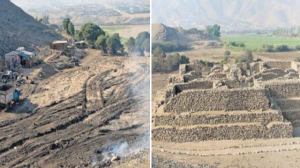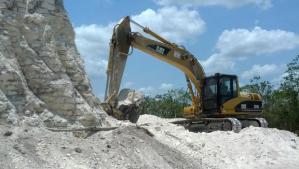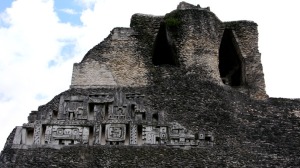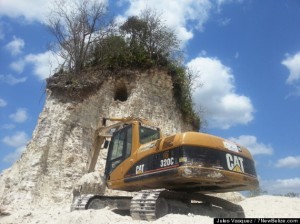Full confession: I kind of hate these year-end recap stories that crop up this time every year. I guess I object to the idea that the end of a year is some real event rather than a superficial cultural marker, and I feel like we’d all be better served to keep pushing on rather than acting as though something is “ending.” That said, I do understand how important it is to stop and take stock of what’s happened every once in a while, and if the end of a year inspires people to do that, so be it. In the spirit of the season, here are five stories reflecting the threats and challenges the world’s cultural and historic heritage has faced in 2013:
5. Looting and black market antiquities dealing
Presumably looting could make a list like this one any year, but the turmoil in places like Egypt and Syria (keep reading) made this an especially difficult year for curtailing the illegal trade in antiquities. Apart from those two places, which we will deal with separately, looting was also rampant in places like Macedonia, Libya, Gaza, and Somalia. Billions of dollars are being made illegally each year via the antiquities trade. Even in the United States, the issue of art looted by the Nazis and brought to American museums after the war is still relevant.
4. Egypt’s instability puts artifacts, sites at risk
It was a year of incredible change and turmoil in Egypt, with the elected but increasingly undemocratic government of Mohamed Morsi and the Muslim Brotherhood being forced from power by the Egyptian armed forces in July. Dueling protests, both for and against Morsi and then, after the coup, for and against the new military government caused chaos in the streets of major cities like Cairo and Alexandria, and threatened Egypt’s priceless stores of antiquities. In August the Malawi Museum in the Upper Egyptian city of Minya was ransacked and looted. The museum has recovered some of its collection, but the search for the rest of its pieces is ongoing. Despite the chaos, and the promise of further chaos if Egypt is unable to transition from its current repressive military government to a stable democratic system, the removal of the Muslim Brotherhood from power was probably a good thing for Egypt’s antiquities. The Brotherhood is another offshoot of the same kind of ultra-conservative Islam that produces those Salafi groups that have damaged or destroyed precious historical sites throughout the Islamic World, and Morsi’s government showed little interest in protecting Egypt’s cultural heritage from looters and developers, prompting UNESCO to threaten to remove several Egyptian sites from its World Heritage list. Perhaps the biggest loss, and risk of further loss, has been in regards to Egypt’s Coptic churches, which have been targeted by angry pro-Brotherhood protesters on religious grounds.
3. The pressures of development
All over the world we saw sites threatened and destroyed by unchecked commercial and industrial development. A 2300-year old Mayan pyramid in Belize was obliterated to make gravel. A 4000 year old pyramid at El Paraiso, Peru, was destroyed by developers. The threat of unchecked mineral mining has put ancient sites across Afghanistan at grave risk. Ancient burial mounds, some more than 4000 years old, are being destroyed by development in Bahrain. Prehistoric sites are being demolished by developers in the Bujang Valley in Malaysia. Developers plowed up a 2000 year old necropolis in Cyrene, Libya. Sites from the earliest days of Islam continue to be destroyed in Saudi Arabia. America is not immune to this trend, as American Indian sites are being wiped out for things as frivolous as new Walmart warehouses.
2. Natural disasters destroy sites in the Philippines
In October, 7.2-magnitude earthquake devastated heritage sites in the Philippine province of Bohol, in particular reducing several centuries-old churches to rubble. Two of these churches, the 17th century Loboc Church and the 18th century Baclayon Church, had been considered for UNESCO World Heritage status before they were destroyed. The devastation caused by Super Typhoon Haiyan, only a month later, compounded the challenge of recovering these sites and also damaged several other heritage churches all over the country.
1. Syria
If the civil war in Syria ended tomorrow the loss of Syria’s rich cultural heritage would still be incalculable, but the war continues and continues to destroy sites and artifacts that had survived for centuries despite doomed efforts to stave off the destruction. Entire sites have been heavily damaged if not destroyed in the fighting. The city of Aleppo and its millenia of cultural heritage is all but destroyed, and the Syrian government continues to batter it. The direct impacts of the conflict aside, the chaos created by the war has led to rampant illicit excavation and looting. The loss of Syria’s heritage is not just tragic from the standpoint of lost history and culture, but it is deeply harmful to the chances of Syrian society recovering from the devastation of the war, whenever it does end:
The preservation of Syria’s cultural heritage is critical to its reconstruction, reconciliation, and re-building of civil society, Richard argued at the Met event. Historical sites and objects “are a part of Syrian life — a source of pride and self-definition for their present and future,” she said. Losing its cultural history would rob Syria of the economic opportunities linked to tourism and cultural preservation; in 2010, tourism accounted for 12 percent of the country’s GDP and employed 11 percent of its workers.





